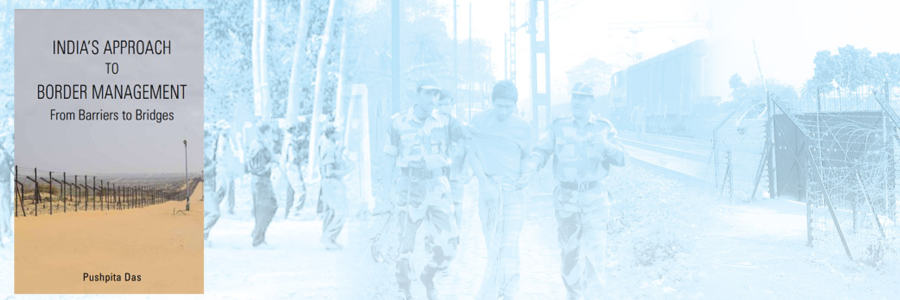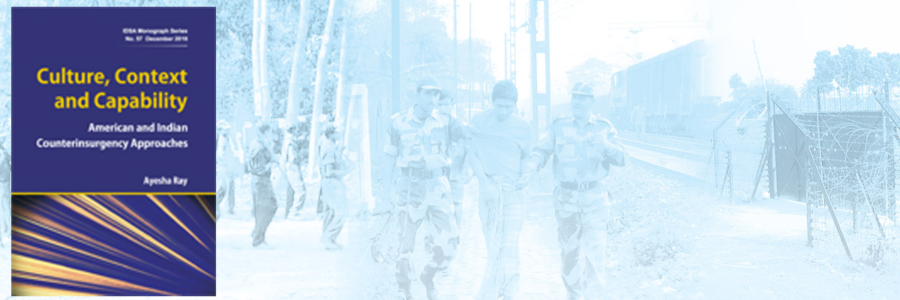The Naga Narrative of Conflict: Envisioning a Resolution Roadmap
The Naga narrative of dissent is a longstanding issue afflicting India's Northeast. Though attempts are being made to resolve the issue through peaceful dialogue between the Union Government and the resistance groups, earlier peace agreements such as the Nine Point Hydari Agreement and the Shillong Accord failed to garner support from all the different Naga tribes. The local fault lines are also playing a destabilizing role in the current peace process with tribal loyalties transcending group loyalties.
Terror Trends: Mega Cities, Maximum Impact
The security environment of India is in a critical phase, repeatedly challenged by terrorism, with outfits operating out of Pakistan continuing to be highly active and finding new and unexpected targets. Trend analyses over the years indicate that the targets, motives and operatives have changed. Terrorist attacks are no more targeted mainly at security forces and government establishments, but have expanded to include strikes against India’s economic and strategic assets.
Shaping Security in India’s Maritime East: Role of Andaman & Nicobar
Complex and amorphous threats confront India’s security environment in its maritime East. India has very high stakes in the Bay of Bengal and its adjoining seas. The confluence of vital sea lines makes this region one of great strategic relevance to other powers as well. This translates into both challenges and opportunities for India. The Andaman & Nicobar archipelago had long been perceived as India’s key vulnerability due to its remote location and a history of some of its islands ‘slipping away’ from the Indian dominion. Such wariness may be unfounded in the present times.
Delhi Blasts, Terror Networks and India’s Internal Security
A series of bomb blasts in Delhi on October 29, 2005, that left 66 dead and 220 injured has, once again, underlined the acute vulnerability of major Indian cities to international terrorism. The blasts in Sarojini Nagar, Paharganj and a Delhi Transport Corporation (DTC) bus in Govindpuri were well-orchestrated, nearly simultaneous, and targeted crowed markets and city centres.
The Earthquake in Kashmir
The massive destruction caused by the earthquake in India and Pakistan has thrown up huge challenges of rescue, relief and rehabilitation. The magnitude of the destruction means that reconstruction and rehabilitation in the affected areas is going to be a long process. There are reports that the death toll in Pakistan Occupied Kashmir (PoK) and Northern Territories could cross 50,000. The losses in India have been comparatively less, and despite the huge difficulties of terrain authorities have effectively engaged in overcoming the effects of the tragedy.
Vivek Chadha, Low Intensity Conflicts in India: An Analysis
Low intensity conflicts in India, despite a long history and a major threat to national security, have remained substantially under-researched. Though a number of books have been written on the various aspects of low intensity conflicts, one still finds gap in the scholarship, particularly in areas relating to its varied dimensions, factors that sustain them, extremist groups – their interests, leadership, mobilisation strategy, financial resources, and other dimension of state intervention, including the role of various security forces.
The Problem of Kashmir and the Problem in Kashmir: Divergence Demands Convergence
India and Pakistan have fought four wars over Kashmir and have held several rounds of talks to resolve the 57-year-old issue, but without any tangible success. The only progress thus far has been that India has agreed to discuss the issue as part of the composite dialogue process and Pakistan has shown willingness to explore options other than the UN resolutions on Kashmir. Although both India and Pakistan appear trying to breakaway from the past and think afresh on Kashmir, yet both fail to bring about any significant policy shifts.
Maritime Security in the Indian Ocean: Convergence Plus Cooperation Equals Resonance
The post-Cold War period has witnessed significant maritime developments. The intensification of trade-linked development and the entry into force of the Laws of the Seas in 1994 led to state interests being increasingly identified with freedom of navigation and ocean resources, thus making maritime issues a major subset of national security. Events leading to 9/11 saw the addition of an amorphous dimension to existing threats, expanding the ambit of maritime security.
Import of 9/11 Against Beslan Backdrop
Beslan, till recently an unknown small town in Russia, has become the latest ‘victim-symbol’ in the global pattern of terrorist violence. The manner in which innocent young children were slaughtered on September 3 marks a reprehensible low even by the standards of the terrorist. The death toll at the time of writing this comment is in excess of 350 and still climbing. The shocking and gruesome Beslan images that repeatedly screamed across millions of television screens the world over were reminiscent of the enormity of 9/11 three years ago.
Indo-Pakistan Talks 2004: Nuclear Confidence Building Measures (NCBMs) and Kashmir
After six years, in June 2004 India and Pakistan resumed the composite dialogue process that covers eight baskets of issues agreed upon in Male in 1997 between Prime Minister Inder Kumar Gujral and Nawaz Sharif. The eight baskets are Jammu and Kashmir; Siachen; Wullar Barrage/Tulbul Navigation Project; Sir Creek; Terrorism and Drug Trafficking; Economic and Commercial Cooperation; Peace and Security; and Promotion of Friendly Exchanges in various fields. The last round of talks was held in October 1998 in Islamabad, on Peace and Security, CBMs and Jammu and Kashmir.
Karbi-Kuki Clashes in Assam
Militant groups clashing among themselves for control over the public resources even at the cost of the rights of the local tribal or ethnic community they claim to be defending, is an important factor behind persistent inter-ethnic conflicts
Psychological Operations (PSYOPs): A Conceptual Overview
The psychological dimension of a conflict is as important as its physical dimension and psychological Operations (PSYOPs) have become even more relevant in this age of information, especially for a nation-state where the threat in the socio-psychological domain is more pronounced. While combating the menace of terrorism, the psychological dimension assumes great significance, as terrorists use violence as a psychological weapon by terrorising the multitude, rather than physically affect a few, and in this sense, they fight a psychological war also.
Bodo Insurgency in Assam: New Accord and New Problems
Assam, one of the seven states of the northeastern region of India, has long remained one of the most volatile and sensitive regions in the country because of the problems of insurgency, ethnic conflict, pressure of migration, underdevelopment etc. Bodos, the largest plains tribe of Assam started an armed struggle for a separate state in the mid-1980s. This armed struggle led to ethnic cleansing of the non-Bodos along the north bank of the Brahmaputra.
Terrorists’ Modus Operandi in Jammu and Kashmir
Terrorism in the state of Jammu and Kashmir has completed almost 15 years. It marked its arrival with blasts in Srinagar city in 1988 and subsequently expanded to other parts in a well-planned and organised manner. It has the ingredients of a professionally run movement. Initially, majority of the terrorists were locals who had crossed over to Pakistan in large groups in 1987 and returned after obtaining training, but gradually the foreigners, mostly Pakistanis, replaced them. Locals or foreigners, terrorists depend fully on the public support—obtained voluntarily or through coercion.















